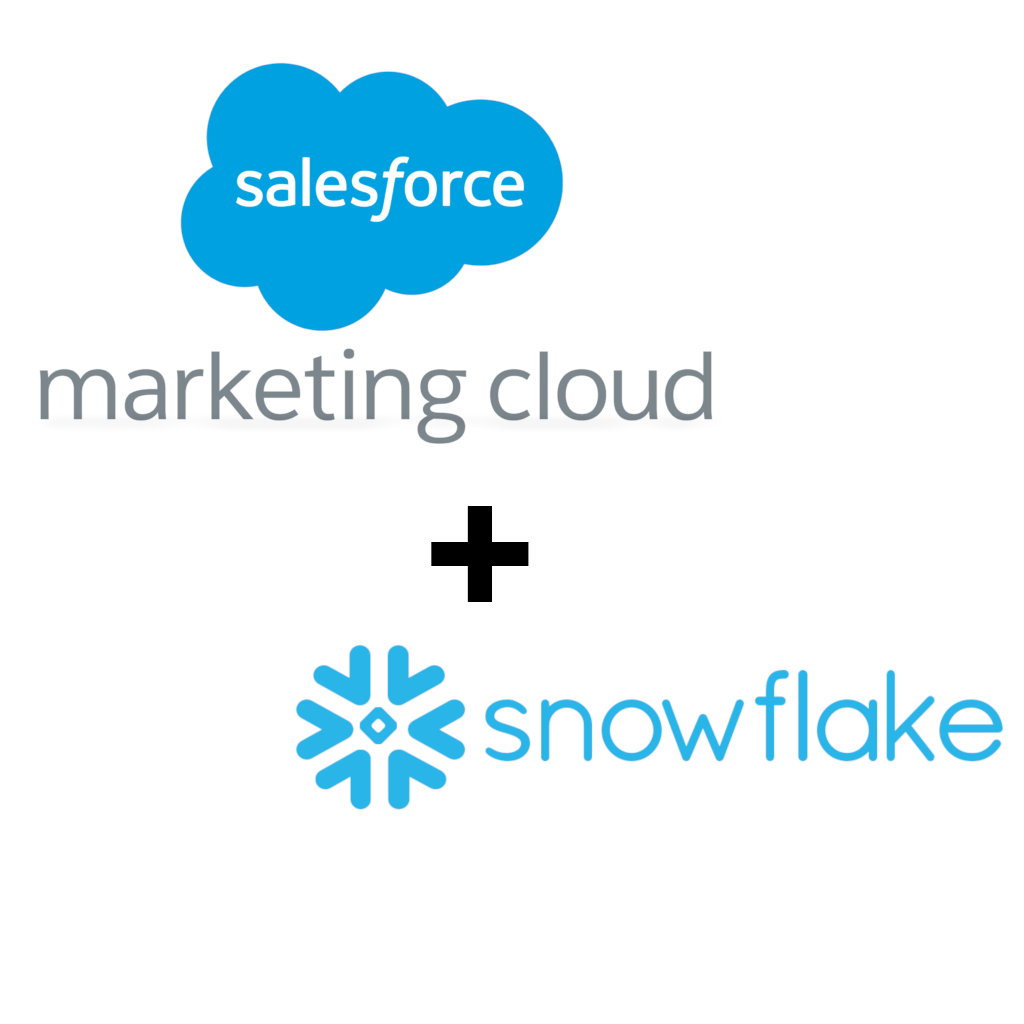
Two of the most inspiring trends in marketing technology (MarTech) and analytics today are Salesforce’s Marketing Cloud (SFMC) and Snowflake’s data warehousing platform. SFMC offers marketers a powerful and vivid Journey Builder experience, while Snowflake tears down data silos and makes more data accessible to analysts than ever before.
Both platforms are next generation, “cloud first”, solutions that open new possibilities for marketers and are already helping to create more compelling and relevant experiences for consumers.
One consistent theme shared by these solutions that makes them so powerful is a shared commitment to simplifying the end user experience, while simultaneously unlocking a vast array of new possibilities to work with data. This commitment empowerment through ease of use are examples of “soft technology”.
Snowflake and SFMC as "Soft Technology"
“When I speak about the power and virtues of technology, I am referring to soft technology: technology that is flexible, that is under our control.” ~Don Norman
What makes a technology great is how easy and flexible it is for end users. Both SFMC and Snowflake simplify the user experience for their target users, with remarkable results.
SFMC’s Journey Builder allows marketers to build sophisticated journey orchestration flows on a canvas that is akin to how the same marketer might naturally hypothesize and draft a journey on a whiteboard or notebook. Once configured, there is no call or waiting for IT stakeholders: it’s time for delivery.
Snowflake’s target users are analysts, data engineers and data scientists. For them, Snowflake tears down data silos and banishes traditional storage and processing constraints, so they can focus on applying their unique skills to solve the business problem at hand. More time is spent asking and answering business problems, as opposed to being bogged down by the banality of perpetual data consolidation and cleansing.
Over and above helping users overcome high data volumes, Snowflake simplifies working with and deriving value from different varieties of data as well. The “variant” datatype allows users to work with unstructured data such as logs or detailed customer activity signals, which are a largely untapped source of data for marketers in most organizations.
The Perils of “Hard Technology” for SFMC Users
“Hard technology remains unheedful of the real needs and desires of users. it is a technology that, rather than conforming to our needs, forces us to conform to its needs. Hard technology makes us subservient;” ~Don Norman
SFMC’s Journey Builder users are most productive and deriving maximum benefit from the tool when their source data has been well prepared and curated for marketing purposes. Often, data management initiatives are part of initial SFMC implementation projects to ensure the most common use cases are accounted for.
As marketing needs evolve and change over time, new customer profile data and segments are required to meet marketing objectives and deliver new types of campaigns. This is where “hard technologies” can creep back into processes and increase time-to-market for campaigns. When new customer information is required, marketers rely on IT to use hard technologies like complex SQL queries or programing languages to prepare data.
An unoptimized process emerges, often resembling the following:
- Marketer realizes that they are missing customer data or a new type of segment for their upcoming campaign
- Marketer makes a request to IT to make the new information available in SFMC
- IT receives the request and prioritizes it based on their SLAs
- IT asks clarification questions about requirements and priorities
- Marketer provides further clarification and detail on their needs
- IT provides estimated effort for interdepartmental transfers
- IT performs build activities making use of inflexible automation
- IT performs initial unit testing and submits results to marketing for approval
- Marketer approves test results
- IT schedules production roll-out of changes for upcoming release
After finally completing the preceding ten steps, we likely wouldn’t fault the marketer for forgetting why they asked for the data in the first place. This inefficient handoff and use of hard technologies is the enemy of marketing agility and rapid time to market.
Avoid Hard Technology by Marrying Snowflake & SFMC
Bridging the words of data and marketing automation has traditionally leaned heavily on the most business focused programing language used across most organizations: SQL. Gifted “switch hitter” resources that are competent in both SQL and specialized on marketing automation tools can be highly effective, but they are difficult to naturally grow, and expensive to acquire.
Today, low-code and visual SQL tools are available to allow campaign analysts to remain business focused and maintain their primary specialization within marketing automation. Although they may need to occasionally “phone a friend” in data engineering or data science teams for some complex needs, they can be autonomous for meeting 80% of their daily data needs.
Low-code solutions that are substitutes for writing SQL or can assist with writing SQL are now more powerful than ever thanks to new capabilities included in modern data warehousing platforms. For example, Snowflake offers a “variant” datatype, which contains unstructured data useful to marketers such as detailed usage or behavioural information. Snowflake enables SQL-like querying of this data directly, as opposed to requesting retrieval from a data engineer using a complex Hadoop ecosystem platform, sometimes using less accessible languages like Java, Python or Pig.
Low-code and visual SQL tools help fill a gap for marketers that enjoy the intuitive experience of working with SFMC’s Journey Builder, but sometimes need to step outside the boundaries of what the tool can do. Autonomously exploring and retrieving new types of customer data and segments will ensure they maintain productivity and continue to benefit from the best that SFMC has to offer. However, not all tools are created equal, and using a checklist will help your own selection process.
Checklist for Low-Code & Visual SQL Tools
“Low-code” is current trending, and diverse solutions for different industries, users and use cases have recently emerged. For your own organization, look for the following to ensure the highest impact for marketers, and their supporting teams using Snowflake.
- Ability to build selection queries using a point-and-click interface
- Uses the power of Snowflake for compute, to ensure complex multi-million-row queries complete in seconds
- Access to all data that is relevant for marketers — not just what has been loaded into SFMC
- Customer segments load quickly into and out of Snowflake & SFMC by using the most current Snowflake APIs like Snowpipe
- Solution does not exceed volume or frequency limits of SFMC APIs, or incur additional API usage fees
- Last updated dates for segments and customer data is immediately updated in SFMC to avoid productivity or quality issues
- Access the point-and-click interface from within SFMC, without the need for a separate web application
For an opportunity to join a private beta for a low-code solution built exclusively to integrate Snowflake and SFMC check-out SnowSelect by SpadinaBus.
To learn how Snowflake’s “VARIANT” datatype can help Salesforce Marketing Cloud users to unlock valuable new semi-structured data sources, learn about the top use cases here.
